- Home
- Peter Ackroyd
The Death of King Arthur
The Death of King Arthur Read online
Table of Contents
Title Page
Copyright Page
Introduction
THE TALE OF KING ARTHUR
Merlin
The Knight with the Two Swords
Arthur and Guinevere
The Wickedness of Morgan le Fay
THE ADVENTURES OF SIR LANCELOT DU LAKE
TRISTRAM AND ISOLDE
Isolde the Fair
Tristram’s Madness and Exile
Tristram and the Round Table
The Reunion of Tristram and Isolde
THE ADVENTURE OF THE HOLY GRAIL
The Miracle of the Holy Grail
The Quest Begins
The Quest Goes On
Lancelot and Galahad
The Miracle of Galahad
LANCELOT AND GUINEVERE
The Poisoned Apple
The Fair Maid of Astolat
The Knight of the Cart
THE DEATH OF ARTHUR
The Strife Begins
The Vengeance of Gawain
Lancelot and Gawain
The Day of Destiny
The Dolorous Death and Departing out of This World of Sir Lancelot and Queen Guinevere
VIKING
Published by the Penguin Group
Penguin Group (USA) Inc., 375 Hudson Street,
New York, New York 10014, U.S.A.
Penguin Group (Canada), 90 Eglinton Avenue East, Suite 700,
Toronto, Ontario, Canada M4P 2Y3
(a division of Pearson Penguin Canada Inc.)
Penguin Books Ltd, 80 Strand, London WC2R oRL, England
Penguin Ireland, 25 St. Stephen’s Green, Dublin 2, Ireland
(a division of Penguin Books Ltd)
Penguin Books Australia Ltd, 250 Camberwell Road, Camberwell,
Victoria 3124, Australia
(a division of Pearson Australia Group Pty Ltd)
Penguin Books India Pvt Ltd, 11 Community Centre, Panchsheel Park,
New Delhi – 110 017, India
Penguin Group (NZ), 67 Apollo Drive, Rosedale, Auckland 0632,
New Zealand (a division of Pearson New Zealand Ltd)
Penguin Books (South Africa) (Pty) Ltd, 24 Sturdee Avenue,
Rosebank, Johannesburg 2196, South Africa
Penguin Books Ltd, Registered Offices:
80 Strand, London WC2R oRL, England
Translation, retelling and introduction copyright © Peter Ackroyd, 2010. All rights reserved.
ISBN : 978-1-101-54590-4
Without limiting the rights under copyright reserved above, no part of this publication may be reproduced, stored in or introduced into a retrieval system, or transmitted, in any form or by any means (electronic, mechanical, photocopying, recording or otherwise), without the prior written permission of both the copyright owner and the above publisher of this book.
The scanning, uploading, and distribution of this book via the Internet or via any other means without the permission of the publisher is illegal and punishable by law. Please purchase only authorized electronic editions and do not participate in or encourage electronic piracy of copyrightable materials. Your support of the author’s rights is appreciated.
http://us.penguingroup.com
Introduction
Sir Thomas Malory came from a family steeped in the values and traditions of the chivalric code. His ancestors were ‘gentlemen that bear old arms’, and their blood relationship with both the Normans and the Vikings suggests that they were sufficiently robust to do so. They had settled at Newbold Revell, in Warwickshire, and had managed to acquire vast estates throughout that county. As the inheritor of a name and domain, Malory himself was ineluctably drawn into the contests of the wider world.
He was born, in the first decade of the fifteenth century, at a time of great violence and uncertainty. Richard II had been deposed and murdered in 1400; his successor, Henry IV, was continually beset by all the confusion that surrounds any successful rebel. So the realm was disordered. This context of suspicion and almost continual violence can be glimpsed in the pages of Le Morte d’Arthur, most particularly in the conflict between Arthur and Mordred.
In this period of battles, and rumours of battles, there can be little doubt that Malory would have been acquainted with the great chivalric tales of the age. They were part of any gentleman’s education. He would have heard readings of Brut and the alliterative Morte Arthur, those great clarion calls to the knightly spirit. He would also have attended jousts and tournaments, where the words of the ballads and epics took on a formidable and glamorous life. We may apply to the young Malory his own words, ‘This child will always be shooting or casting darts, and is glad to see battles and prancing knights.’
He was also trained in all the feudal arts of chivalry – arts that included hunting, riding, hawking and archery. His earliest biographer, writing in the sixteenth century, described him as ‘outstanding from youth for his heroic spirit and for many remarkable gifts’. At the age of fourteen, in fact, he went to war against France in the retinue of the Earl of Warwick. He served as a ‘lance’ at Calais and four years later he was mentioned at a muster roll in Normandy. In that capacity he may have participated in the siege of Rouen, and was part of the army under the command of Henry V. It is perhaps not coincidental that Henry V was often compared to the legendary Arthur.
In 1433 or 1434, while he was in his early twenties, Malory inherited the familial estate; eight years later he became a knight, the goal of all chivalric ambition. He also became Justice of the Peace, Member of Parliament, and Sheriff of Warwickshire. These were all highly significant positions, emphasizing Malory’s status at the very summit of the county hierarchy. To be sheriff was, indeed, to be the most important person of the shire. He was directly responsible to the king. The house at Newbold Revell was enlarged, no doubt because he was in the process of acquiring a wife and family. He had in any case a large household of servants, one of whom was a harpist whose task was to sing of love and chivalry as the wine was being passed around. He must also have owned a large collection of books, which in those days were locked and guarded as precious objects.
Yet he was in no sense the embodiment of literary or courtly virtue. At the beginning of the twentieth century an American scholar discovered a court record, partially burned, that accused Malory of rape, ambush, intent to kill, theft, extortion and gang violence. That is probably a good summary of the career of a fifteenth-century knight, even though it is not a model example of the ideal of medieval chivalry. In 1451 he was briefly imprisoned at Coleshill Manor, but escaped by swimming across the moat. It sounds a romantic feat, but at the time the moat was filled with sewage. Then he gathered up a motley army and attacked Coombe Abbey in his own county, from which place he stole money and valuables. He was taken into custody, and for the next eight years he was in and out of prison. He broke out of gaol in Colchester in 1454, while threatening his gaolers with an assortment of weapons. He was never formally put on trial, owing to the annoying inability of jurors to turn up on the appropriate occasions, and as a result he was often freed on bail. He spent a further period in Newgate, but the cause of his imprisonment is not known.
Life in prison was not necessarily as hard as it is in the twenty-first century. He had his own set of chambers, and was granted access to his family. He had enough money, too, to purchase the comforts of home. At the end of one of the Arthurian stories he refers to himself as ‘a knight presoner’, so we know that he wrote at least part of Le Morte d’Arthur while incarcerated; this great epic may therefore be seen as a towering example of prison literature, to be compared to Bunyan’s The Pilgrim’s Progress and The Consolations of Philosophy by Boethius. The setting may also help to
explain the tone of melancholy that seems to invade the narrative, a wistfulness combined with a dour sense of fate. The story of Arthur is accompanied by sensations of loss and transitoriness, as well as a note of stoic resignation, which may reflect the author’s own experience.
The judicial pardon of Sir Thomas Malory was inscribed on an official roll in the autumn of 1462. He is mentioned in a list of knights about to march into Northumberland. He was by now an old, as well as an experienced, warrior. Then once more he disappears from the record until his death in the spring of 1471. It is not known how or where he died. He was buried in the Greyfriars Church by Newgate, however, and the proximity to that famous gaol suggests that he was once more a prisoner. The church and graveyard are now no more than ruins. But of course he left behind a greater monument. Le Morte d’Arthur was published by Caxton’s press in the summer of 1485, and has been continually in print since that time.
Malory’s work is suffused with the imperatives and rituals of the chivalric code, the important testament of military virtue that had first emerged in the twelfth century. King Arthur was supposed to fight, for example, and a warlike ruler was considered to be a good ruler. If God looked kindly upon a monarch, He would bequeath him success in battle. It was the law of life. It was one of the essential prerogatives, or duties, of sovereignty, reflecting a period in which warfare was endemic. Throughout Malory’s narrative kings are constantly engaged in sieges and in battles. No land goes uncontested, and no crown is necessarily safe. So military valour was crucially important.
The medieval nobleman was trained in courage and prowess. The young squire, so noticeable a feature of Malory’s adventures, was always a boy of noble birth. He was educated in a great household, where he served his master and was also taught the use of arms. His highest ideal was that of knighthood, preferably gained on the battlefield but acquired, as a rule, on reaching the age of twenty-one. It was, in one sense, another form of baptism. Before the honour was conferred upon him he took part in a ritual bath and repeated a vow of chastity; he fasted until nightfall, and then spent the night in prayer. At dawn he confessed his sins, attended mass and took Holy Communion. He then kneeled before his godfather and promised to obey the rules of knighthood and to protect the virtue of all women; he also declared that he ‘would speak the truth, succour the helpless and oppressed, and never turn back from an enemy’. There were material, as well as spiritual, benefits to be gained from his new status. Henry II ordered that a knight arrested for debt should not be consigned to a common prison; his property could be sold to pay his debts, but his horse was protected from confiscation.
Chivalry can on one level be understood as the practice whereby the laws of honour supersede those of right or justice. There were elaborate laws of warfare, for example, that governed the conduct of sieges. There were also principles concerning the treatment of hostages, the respect for envoys, and the terms of truces. In warfare knights would spare the lives and privileges of other knights, while happily massacring the women and children among the local population. There are no tears shed in Malory’s account for the fate of peasants or of shepherds. He is a frankly aristocratic writer without the sensibility of Chaucer or Langland.
That is also the context in which Malory’s lavish description of jousts and tournaments is best understood. These were rituals of battle with their own codes and values. Originally they had been real conflicts, staged over a large area of ground, between trained bands of knights. They closely resembled actual battle, with the proviso that a dismounted knight had to retire from the field and give horse and armour to his combatant. By the fifteenth century they had become stage-managed jousts in which the principles of combat were demonstrated and in which ambitious young men could advertise their skills.
As the quest for the Holy Grail demonstrates, chivalry was closely bound with the ideals and aspirations of Christianity; it might be said to spring from the first crusades, in fact, when knights fought under the banner of the Cross against the heathen. The crusading knight would be expected to prepare himself with vigils, fasts and prayers. The forces of Christ were meant to be pilgrims as much as soldiers. There grew up cults of military saints, such as Saint George and Saint Victor, and the roles of knight and monk were combined in the religious orders of Templars and Hospitallers. A knight was meant to be chaste and pious; the model of knighthood was of course Sir Galahad, whose apotheosis is admirably described in Malory’s account.
But chivalry was also associated with the code of courtly love that celebrated the female as the source of all virtue and honour. A knight fought for his lady; his love for her rendered him stronger and more courageous. Lancelot and Guinevere, Tristram and Isolde, are among the most famous lovers in literature; much of Malory’s narrative is therefore devoted to them. Like the Platonic love of an earlier civilization – then generally between male and male – courtly love was a shadow or echo of heavenly harmony.
The two creeds of chivalry and courtly love are alike in being quite remote from the experience of life, especially for the period in which Malory was writing. In the fifteenth century the knights of England no longer played their old military role; they were now more likely to serve as members of parliament than as leaders in the field. Some of the sadness of Malory’s account, therefore, may spring from the fact that he is celebrating a code of chivalry and courtly love at the very time they were being diminished.
In Malory’s own account this great epic was composed from sundry ‘old books’. These ‘old books’ were made up of the roman courtois and the roman d’aventures that were so popular among the French nobility. In fact he had thoroughly digested the French prose romances concerning the adventures of Arthur, and had reworked them as a series of self-contained stories following the path of one knight or group of knights. He cut the theology, and generally curbed the excesses of the French originals. He is practical rather than theoretical or spiritual. Malory’s brevity is in fact the essential engine of the plot, which turns upon sudden crises and arbitrary adventures; there are moments of dramatic speech rather than rambling interior monologues; there are incidents rather than well-formed characters. He then introduced these stories one after the other as if they were the organic elements of some total design, in the same fashion as the architecture of the English cathedrals.
As a result of Malory’s plangent and often elaborate prose, the song of Arthur has never ended. Le Morte d’Arthur inspired both Milton and Dryden with dreams of Arthurian epic, and in the nineteenth century Tennyson revived the themes of Malory in Idylls of the King. William Morris wrote The Defence of Guenevere , and Algernon Swinburne composed Tristram of Liones. The Round Table was reconstituted in the libraries of nineteenth-century England.
Malory created for posterity the images of Lancelot and Guinevere, of Galahad and Gawain, of Tristram and Isolde, of Merlin the wily magician and of Arthur the once and future king. Indeed it was through the agency of Le Morte d’Arthur that Arthur took on a posthumous life in medieval histories. There is no evidence that such a monarch ever existed. There may have been a British warrior king who flourished in the late fifth century, and who won a victory against the English invaders at a place known only as Mons Badonicus, but there is no certainty on the matter. King Arthur may simply be a figment of the national imagination. Yet it is still a remarkable tribute to Malory’s inventive genius that Arthur, and the Round Table, have found a secure and permanent place in the affections of the English-speaking people.
A Note on the Text
In my translation I have changed the name of the text from Le Morte d’Arthur to The Death of King Arthur; this gives a more accurate summary of its contents. I have tried my best to convert Malory’s sonorous and exhilarating prose into a more contemporary idiom; this is a loose, rather than punctilious, translation. I have also chosen to abbreviate the narrative in pursuit of clarity and simplicity. I hope that by these means the essential story of Arthur and his knights emerges more clearly, and
that the characters of Camelot are drawn more convincingly. Malory is often rambling and repetitive; much that would have amused and interested a medieval audience will not appeal to a modern readership. I have also quietly amended Malory’s inconsistencies. Despite these alterations, I hope that I have been able to convey the majesty and pathos of the great original.
THE TALE OF KING ARTHUR
Merlin
In the old wild days of the world there was a king of England known as Uther Pendragon; he was a dragon in wrath as well as in power. There were various regions in his kingdom, many of them warring one against another, and so it came about that one day he summoned a mighty duke to his court at Winchester. This nobleman was of Cornwall, and he was called Duke of Tintagel; he reigned over a western tribe from the fastness of his castle on the rocks, where he looked down upon the violent sea. Uther Pendragon asked the duke to bring with him to court his wife, Igraine, who had the reputation of being a great beauty. She was wise as well as beautiful, and it was said that she could read the secrets of any man’s heart on the instant she looked at him.
When the duke and his wife were presented to the king, he rose from his throne and invited them forward with open arms. ‘Come,’ he said, ‘embrace me. This dragon will not bite.’ They were treated with all possible courtesy and honour by the whole court, but the lady Igraine had seen into the king’s dark heart. She knew well enough that he wanted to violate her. He looked at her with lust and cunning. The moment came when he took her by the shoulders and whispered something in her ear. She shook her head, disgusted, and broke away from him. She went to her husband at once, and told him what had occurred. He was enraged, so angry that he smashed his fist against one of the tapestries that lined the wall of the great palace. ‘We were summoned here to be dishonoured,’ he said. ‘I will never submit to that. Pride is the essence of knighthood.’

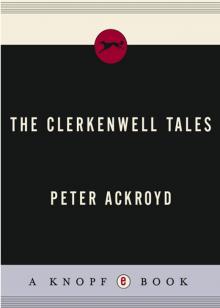 The Clerkenwell Tales
The Clerkenwell Tales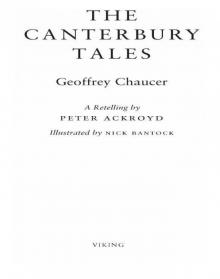 The Canterbury Tales
The Canterbury Tales J. M. W. Turner
J. M. W. Turner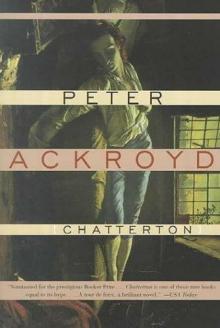 Chatterton
Chatterton The Canterbury Tales – A Retelling
The Canterbury Tales – A Retelling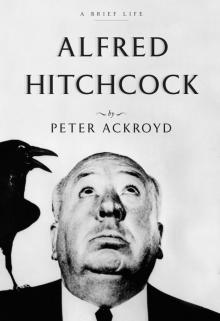 Alfred Hitchcock
Alfred Hitchcock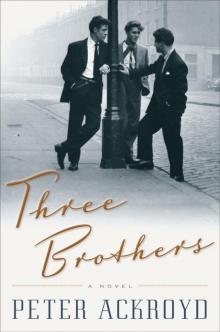 Three Brothers
Three Brothers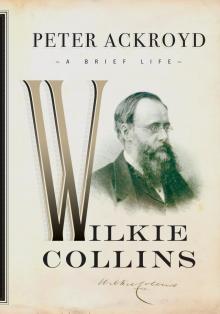 Wilkie Collins
Wilkie Collins Venice
Venice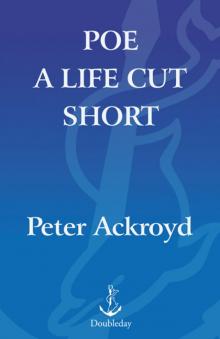 Poe
Poe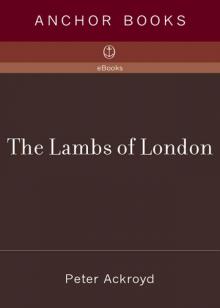 The Lambs of London
The Lambs of London London
London Queer City
Queer City Revolution, a History of England, Volume 4
Revolution, a History of England, Volume 4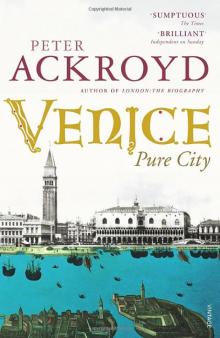 Venice: Pure City
Venice: Pure City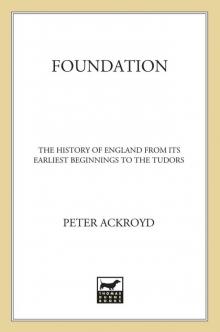 Foundation
Foundation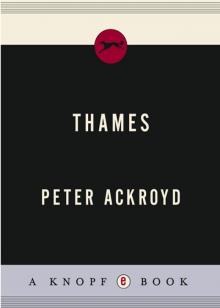 Thames
Thames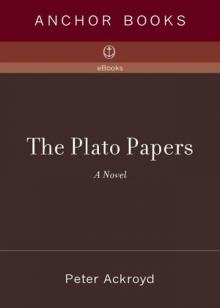 The Plato Papers
The Plato Papers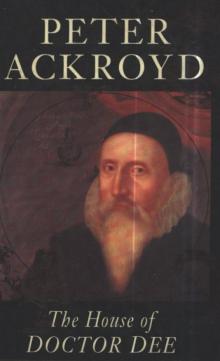 The house of Doctor Dee
The house of Doctor Dee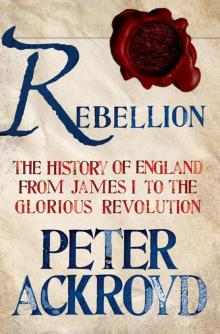 Rebellion: The History of England from James I to the Glorious Revolution
Rebellion: The History of England from James I to the Glorious Revolution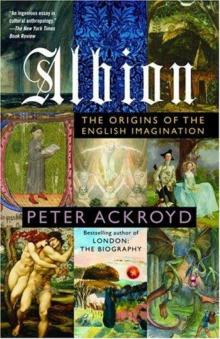 Albion: The Origins of the English Imagination
Albion: The Origins of the English Imagination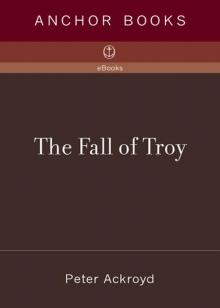 The Fall of Troy
The Fall of Troy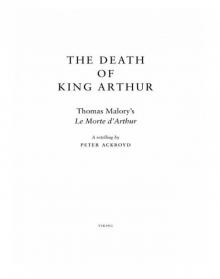 The Death of King Arthur
The Death of King Arthur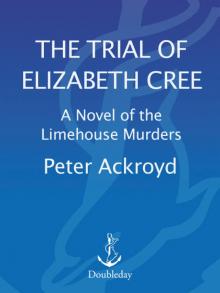 The Trial of Elizabeth Cree
The Trial of Elizabeth Cree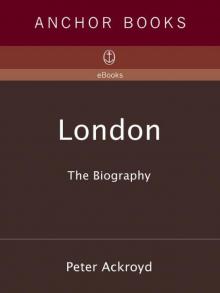 London: The Biography
London: The Biography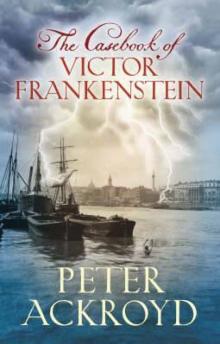 The Casebook of Victor Frankenstein
The Casebook of Victor Frankenstein Hawksmoor
Hawksmoor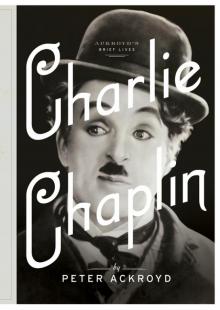 Charlie Chaplin
Charlie Chaplin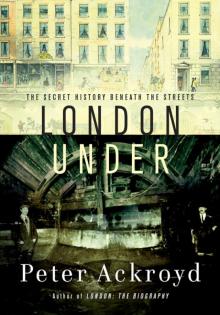 London Under
London Under